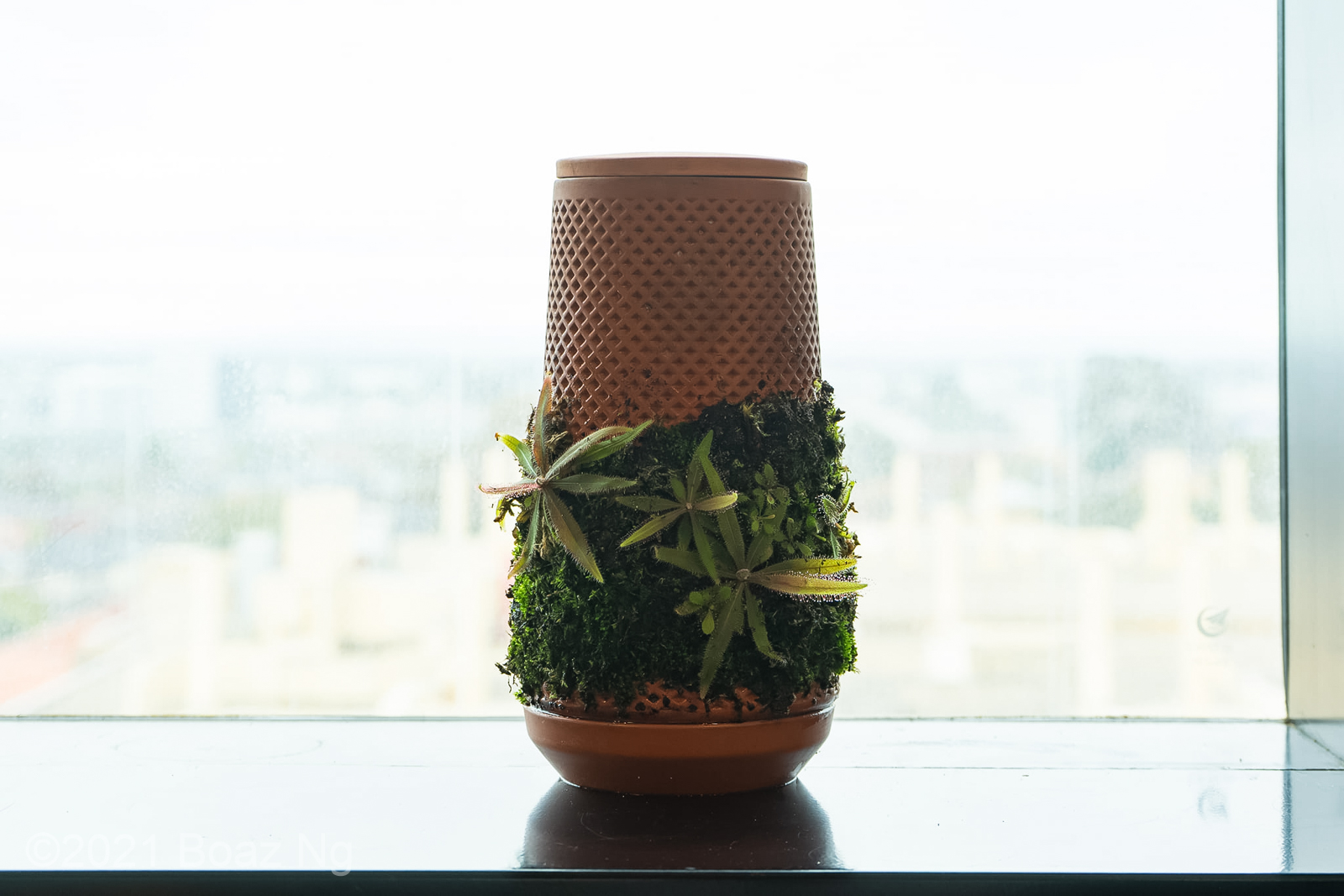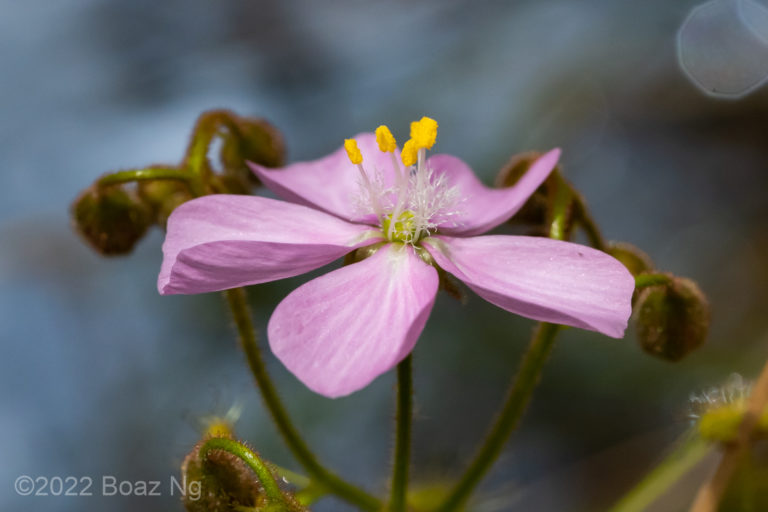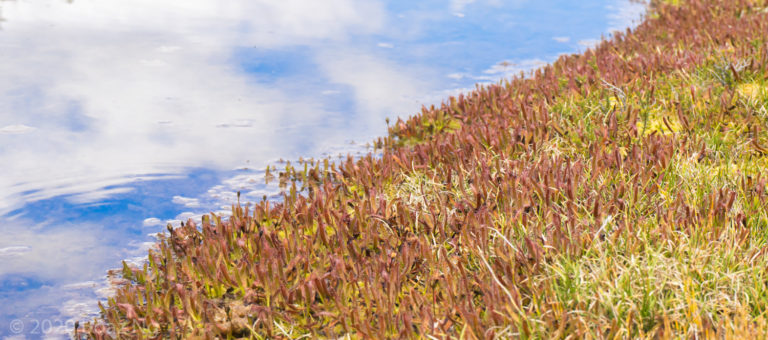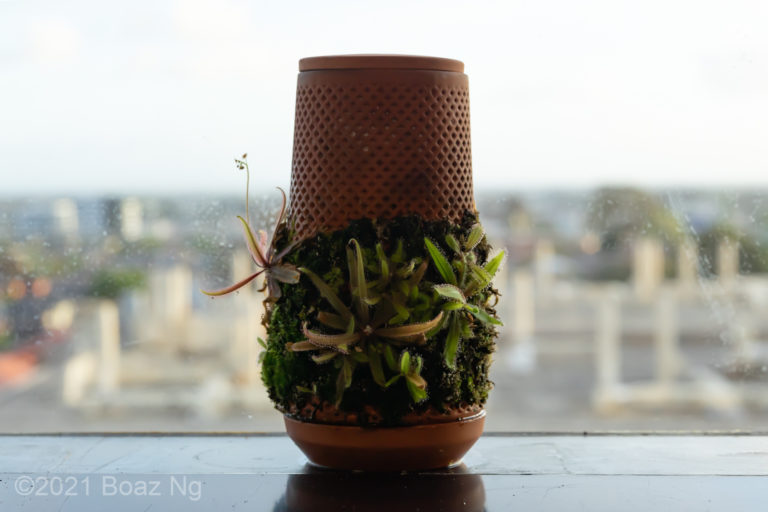I’ve had this planter going for 6 months now. The planter is constructed out of thin terracotta and has a hollow reservoir in the center. This reservoir is filled with water, which slowly seeps out of the porous walls. The original plate at the bottom was also porous so I waterproofed it with a sealant spray to prevent water from seeping straight through it.
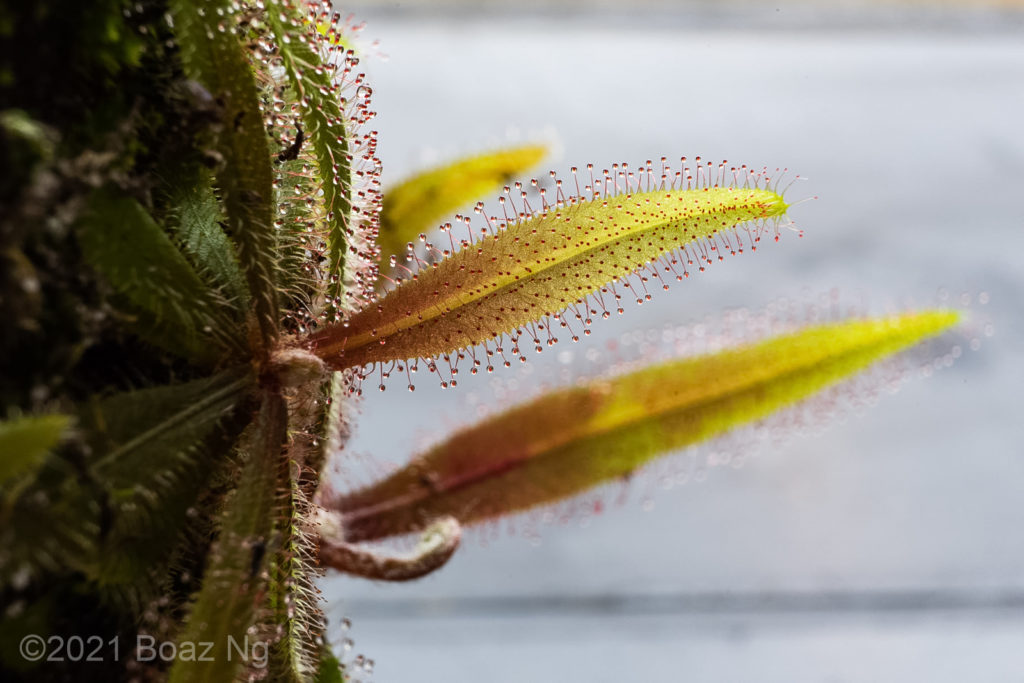
To create a substrate on the walls, I collected some moss of the pavement, chopped it up and mixed it into a thick paste with some peat. This was then smudged onto the sides of the planter and wrapped a few times with thread to secure it in place. Since the evaporation rate is rather high (I typically top it up 50% twice a week), the planter performs best in a lower light indoor setting to reduce water loss – I found the perfect spot on my south facing windowsill (the shaded side in Australia) at work. Accordingly, carnivorous plants that tolerate low light should be used.
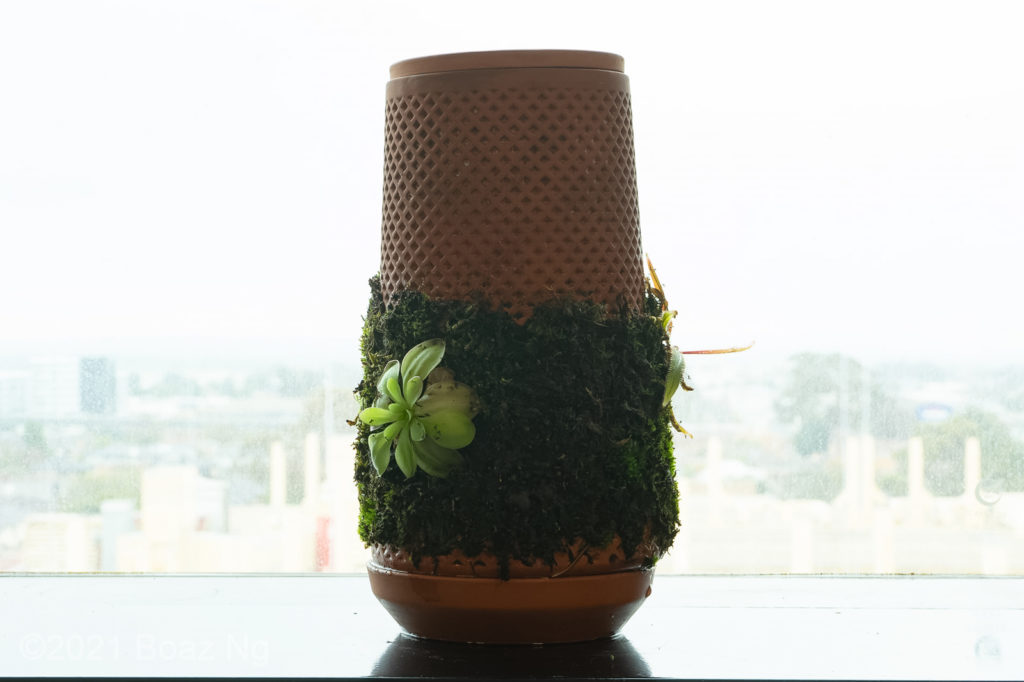
I chose to try Drosera adelae, a species that grows naturally in deep shade as well as on waterfall faces, and Pinguicula laueana as Pings are known to tolerate lower light. To plant them, I pushed their roots onto the moss, covered the roots with more moss and wrapped the whole thing with thread to secure them. I also spread some seeds of Utricularia grampiana, which grows in wet moss gardens atop sandstone.
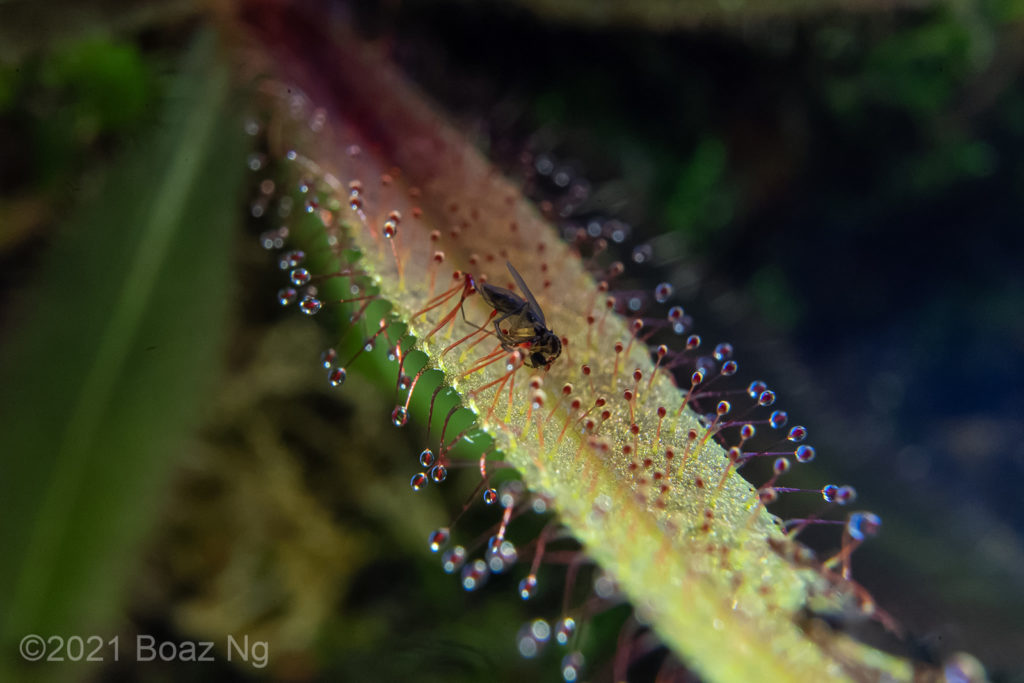
Over the past 6 months, the system really seems to have stabilised and the plants are growing well. D. adelae is really thriving and actively spreading its roots around the whole planter. I can’t wait for adventitious plantlets to be formed on those roots. The P. laueana is also doing well and produces enough dew to catch the fungus gnats that emerge from the other plants in the office. I was a bit worried about the seasonal dormancy for mexican Pings, as during this period the plants should be watered minimally. I don’t see signs of rot though and the plant is reducing the size of its leaves as expected – hopefully it lasts long enough to resume active growth in the spring. The U. grampiana germinated fine but growth seems to have stalled and I’m not sure they’ll get large enough to flower.
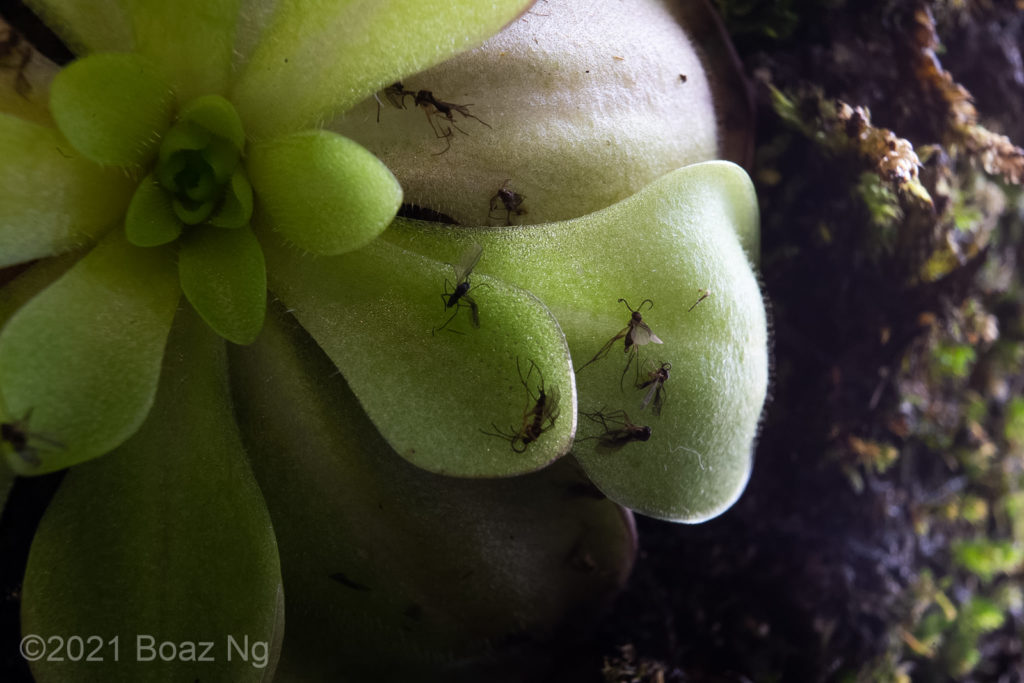
Overall, with careful selection of species, these planters can make an interesting display for carnivorous plants. I can’t wait to see how the planter further develops over the next new months.

